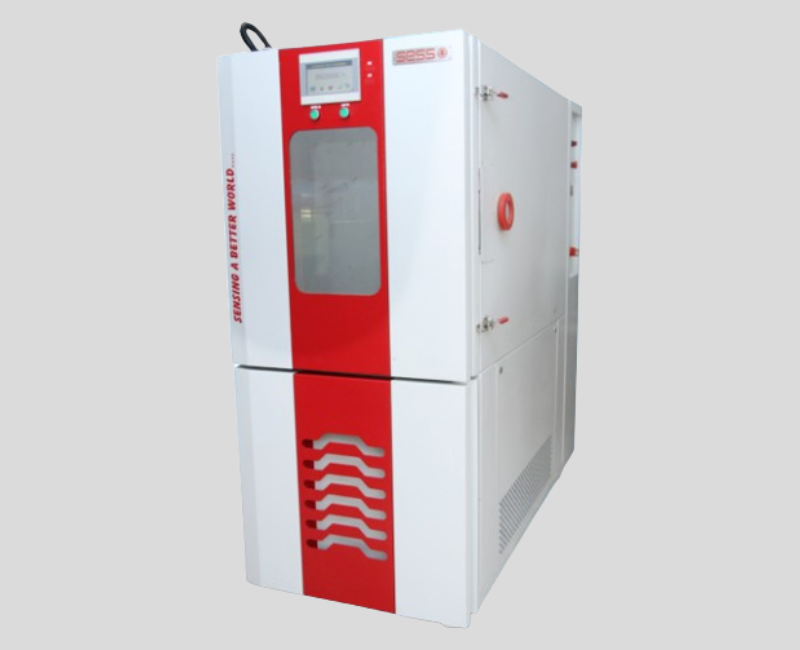
SESS vibration test chambers offer a variety of solutions for vibration testing. V-ETC-Series and V-TC-Series vibration chambers offer rapid temperature change rates with combined temperature, humidity, and/or vibration environments. These chambers are designed for compatibility with your choice of electrodynamic or mechanical vibration systems. The Benchtop Vibration Table, ideal for vibration testing of small components or electronics and is designed for stand-alone testing or may be placed in an environmental chamber for combined temperature and vibration testing.
Vertical and horizontal axis combined vibration chambers offer rapid temperature change rates with combined temperature, humidity, and/or vibration environments. All models are designed for compatibility with your choice of electrodynamic or mechanical vibration systems. While each model is manufactured to standard designs, they may also be custom engineered to meet a wide range of stringent test requirements
The vertical axis combined vibration chambers temperature/humidity and vibration chambers are designed to integrate with vibration systems in only the vertical mode of operation. Chambers may also be used as temperature cycling chambers without vibration utilizing a solid floor plug.
These chambers meet a variety of MIL-STD, ASTM, JEDEC, Telcordia and other test standards.
Vibration Table: Equipped with a vibration table or shaker that can generate various types of vibrations, including sinusoidal, random, and shock tests.
Random Vibration: To simulate real-world operational conditions with a broad frequency spectrum.
Operational Range: Typically from a few Hertz (Hz) to several thousand Hertz, depending on the chamber’s design and the testing requirements.
Control System: Digital or computer-based systems for programming and controlling vibration profiles, including frequency, amplitude, and duration.
Verification: Systems for verifying the performance of the vibration table or shaker.
Fixture Options: Adjustable fixtures or mounts to secure and position test samples securely on the vibration table.
Integration: Many vibration test chambers also incorporate temperature control features to simulate combined thermal and vibrational conditions.
Sensors: Built-in sensors to measure and record vibration parameters such as acceleration, displacement, and velocity.
Emergency Stop: Automated systems to stop the vibration and shut down the chamber in case of faults or safety issues.
User Interface: A touch screen or computer interface for setting up and monitoring tests, including graphical displays of vibration profiles and parameters.
Temperature Range
Typically from -40°C to +80°C (-40°F to +176°F) or wider, depending on the model.
Vibration Frequency Range
Generally from 1 Hz to 2,000 Hz or more, accommodating a wide spectrum of test requirements.
Dimensions
Typically ranges from small tables for electronic components (e.g., 1x1 meters) to larger tables for heavy equipment (e.g., 2x2 meters or larger).
Sensors
Includes accelerometers and displacement sensors to measure vibration parameters such as acceleration, displacement, and velocity.
Voltage
Typically 220V or 380V, depending on the chamber’s size and features.

Lorem Ipsum is simply dummy text of the printing and typesetting industry. Lorem Ipsum has been the industry's standard dummy text ever since.

Lorem Ipsum is simply dummy text of the printing and typesetting industry. Lorem Ipsum has been the industry's standard dummy text ever since.

Lorem Ipsum is simply dummy text of the printing and typesetting industry. Lorem Ipsum has been the industry's standard dummy text ever since.

Learn more

Learn more

Learn more